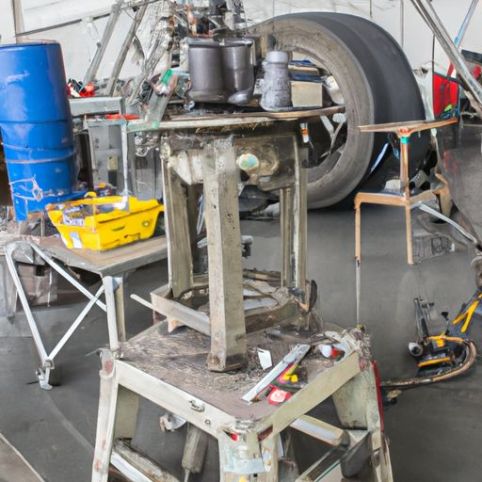Table of Contents
The Importance of Parameters of Aircraft Tow Bar
Aircraft towing is a crucial aspect of aviation operations, as it involves moving aircraft from one location to another on the ground. To facilitate this process, aircraft tow bars are used. These tow bars are specially designed tools that connect to the nose landing gear of an aircraft, allowing ground support personnel to tow the aircraft safely and efficiently.
The parameters of an aircraft tow bar are essential to consider when selecting the appropriate tow bar for a specific aircraft. These parameters include the maximum towing weight, the length of the tow bar, and the type of aircraft it is designed to tow. Understanding these parameters is crucial to ensure the safe and effective towing of an aircraft.

One of the most critical parameters of an aircraft tow bar is the maximum towing weight. This parameter refers to the maximum weight that the tow bar can safely tow without risking damage to the aircraft or the tow bar itself. It is essential to select a tow bar with a maximum towing weight that is appropriate for the specific aircraft being towed. Using a tow bar with a maximum towing weight that is too low can result in damage to the aircraft, while using a tow bar with a maximum towing weight that is too high can pose a Safety risk.
Another important parameter to consider is the length of the tow bar. The length of the tow bar determines how far the aircraft can be towed from the towing vehicle. It is crucial to select a tow bar with an appropriate length for the specific aircraft and towing requirements. Using a tow bar that is too short can limit the maneuverability of the aircraft, while using a tow bar that is too long can make it difficult to control the aircraft during towing.
The type of aircraft that the tow bar is designed to tow is also a critical parameter to consider. Different aircraft have different nose landing gear configurations, which require specific tow bar designs. Using a tow bar that is not compatible with the aircraft’s nose landing gear can result in damage to the aircraft or the tow bar. It is essential to select a tow bar that is specifically designed for the type of aircraft being towed to ensure safe and efficient towing operations.
In conclusion, the parameters of an aircraft tow bar are essential to consider when selecting the appropriate tow bar for a specific aircraft. Understanding the maximum towing weight, length, and compatibility with the aircraft’s nose landing gear is crucial to ensure safe and efficient aircraft towing operations. By selecting a tow bar that meets these parameters, ground support personnel can effectively move aircraft on the ground with confidence and precision.
Exploring the Main Technical Aspects of Aircraft Tow Bar
Aircraft tow bars are essential tools used in the aviation industry to move aircraft on the ground. These bars are designed to attach to the nose landing gear of an aircraft, allowing ground crew to tow the aircraft to and from the runway, hangar, or gate. The use of aircraft tow bars is crucial for efficient and safe ground operations, as they provide a means of moving aircraft without the need for engine power.
There are several parameters that must be considered when using aircraft tow bars. One of the most important factors is the weight capacity of the tow bar. Different aircraft have varying weights, and it is essential to use a tow bar that can safely handle the weight of the aircraft being towed. Using a tow bar with a weight capacity that is too low can result in damage to the aircraft or injury to ground crew.
Another important parameter to consider is the length of the tow bar. The length of the tow bar should be sufficient to provide clearance between the aircraft and any Obstacles on the ground, such as other aircraft, buildings, or equipment. A tow bar that is too short can result in collisions or damage to the aircraft or surrounding structures.
The material of the tow bar is also an important consideration. Aircraft tow bars are typically made of high-strength steel or Aluminum to withstand the forces exerted during towing. It is essential to use a tow bar made of a durable material that can withstand the weight and stress of towing an aircraft.
In addition to these parameters, there are several technical aspects of aircraft tow bars that must be considered. One of the main technical aspects is the attachment mechanism. Aircraft tow bars typically have a hook or pin that attaches to the nose landing gear of the aircraft. It is crucial to ensure that the attachment mechanism is secure and properly aligned to prevent the tow bar from becoming detached during towing.
Another technical aspect to consider is the steering mechanism of the tow bar. Some aircraft tow bars are equipped with a steering mechanism that allows ground crew to control the direction of the aircraft while towing. This steering mechanism is essential for maneuvering the aircraft in tight spaces or around obstacles on the ground.
The weight distribution of the aircraft is also a critical technical aspect to consider when using aircraft tow bars. The weight of the aircraft must be evenly distributed on the tow bar to prevent damage to the nose landing gear or other components of the aircraft. Ground crew must ensure that the aircraft is properly balanced on the tow bar before towing begins.
Overall, the use of aircraft tow bars is a vital aspect of ground operations in the aviation industry. By considering the parameters and technical aspects of aircraft tow bars, ground crew can safely and efficiently move aircraft on the ground. Proper training and adherence to safety protocols are essential when using aircraft tow bars to ensure the safety of both the aircraft and ground crew.
